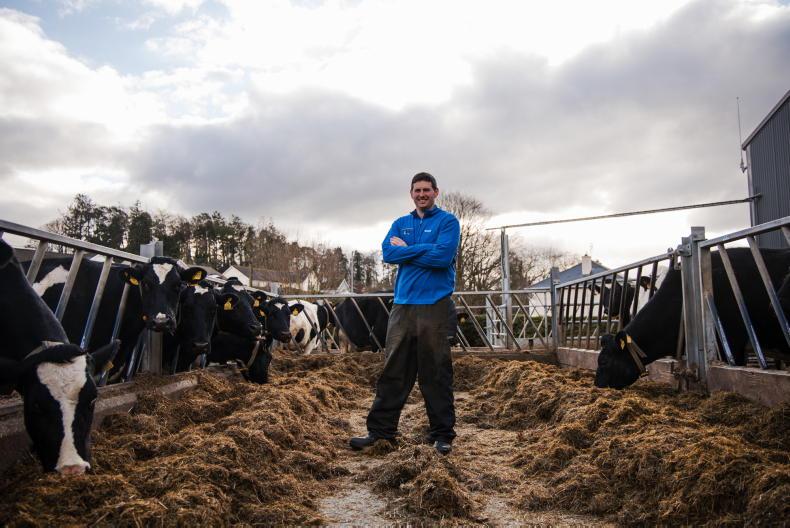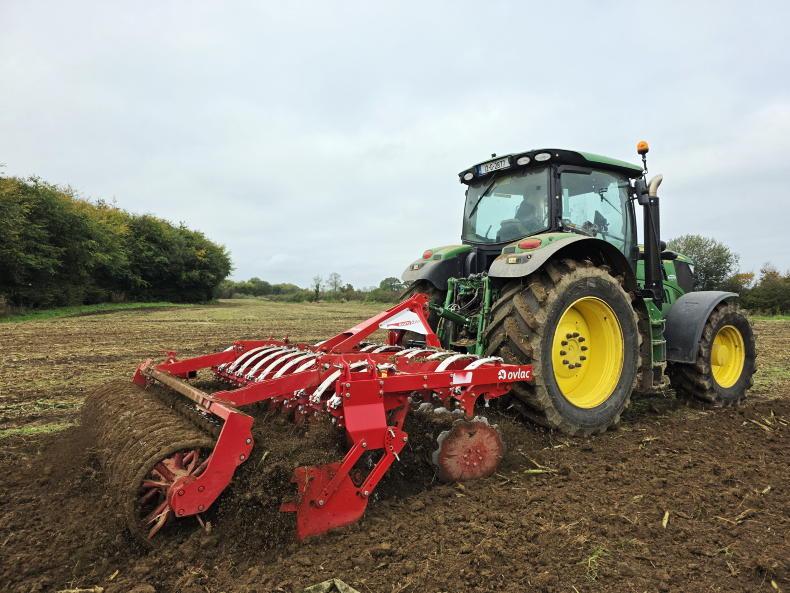With first-cut silage sorted on many farms and grazing platforms carrying strong covers at present, there will be opportunities to reseed some under-performing swards in the coming weeks.
Where farmers are thinking of reseeding grassland this summer, there are many things they should consider.
Outlined are five tips to keep in mind.
1. Sort any drainage and compaction problems first
Before reseeding, is there a problem with fields consistently holding surface water during wet periods?
If so, this issue needs sorting first. Dig a few holes to see if the problem is down to compaction, blocked or collapsed drains or if new drains are needed.
Sub-soiling, soil lifting machines and mole ploughs can sort a lot of problems and tend to cost less than pipe and stoned drains.
2. Assume soil fertility is low
There is little point in taking soil samples from fields that have been grazed or had regular slurry and fertiliser applications before reseeding. The results will be heavily skewed.
Assume these fields are low in fertility, so will benefit from 1t to 2t/acre of lime, as well as P and K, to get new swards established as quickly as possible.
Soil samples can be taken this autumn and winter around six to eight weeks after the final grazing or fertiliser application. Fertility can then be corrected next year.
3. Stitch in grass seed or opt for the plough?
There are a range of reseeding methods, all with merits and drawbacks.
Ploughing will open soils and naturally improve drainage, but it is extremely weather dependent and if rain comes after ploughing, drilling grass seed can be significantly delayed.
Ploughing also leaves a soft seedbed, limiting what type of livestock can graze the reseed without causing damage.
When stitching or direct drilling grass, make sure the old sward is properly burned off. This gives new grass a better chance to establish.
Lime is needed, as the dead grass will make the seed bed acidic.
Stitching tends to be less problematic with weeds, as there is less soil disturbance and, with a firm seedbed, cattle can graze much quicker than a ploughed reseed.
4. Choosing grass varieties and clover
For grazing swards, go for a two-thirds diploid and one-third tetraploid grass mix and vice-versa for swards destined for multiple cuts of silage.
Diploid grasses tiller out better and suit grazing. Tetraploids grow tall and erect, leaving the sward base open and prone to poaching in wet conditions.
On heavier soils, Timothy is a good variety to include. Multi-species swards are also an option, as July and August is a good time for establishment.
Pay attention to grass heading dates, which are ranked as early, intermediate and late. Grasses are also ranked on early and late season growth, as well as persistency when cut or grazed.
Don’t forget about clover. Include 1kg/acre to 2kg/acre of white clover and 3kg/acre for red clover. Drill to a maximum depth of 10mm.
Small leaf varieties suit sheep grazing, medium to large leaf varieties suit grazing with cattle, while large leaf clovers suit silage swards and red clover.
5. Weed control
Getting a post-emergence spray on reseeds at the right time is important to keep weeds under control.
Weeds can be problematic with ploughed reseeds, as there is greater soil disturbance, triggering the bank of weed seeds to germinate.
Low disturbance methods such as stitching can reduce weed burdens and can potentially be considered for high clover swards.
Clover-safe sprays are limited and, as such, some farmers prefer to stitch clover in after applying a post-emergence spray.
Using lighter stock such as weanlings and sheep to graze reseeds will encourage new grass to tiller and out-compete weeds, reducing the reliance on chemical control.
Read more
How to do a simple cashflow forecast
Fertiliser window for grazing and silage aftermath
With first-cut silage sorted on many farms and grazing platforms carrying strong covers at present, there will be opportunities to reseed some under-performing swards in the coming weeks.
Where farmers are thinking of reseeding grassland this summer, there are many things they should consider.
Outlined are five tips to keep in mind.
1. Sort any drainage and compaction problems first
Before reseeding, is there a problem with fields consistently holding surface water during wet periods?
If so, this issue needs sorting first. Dig a few holes to see if the problem is down to compaction, blocked or collapsed drains or if new drains are needed.
Sub-soiling, soil lifting machines and mole ploughs can sort a lot of problems and tend to cost less than pipe and stoned drains.
2. Assume soil fertility is low
There is little point in taking soil samples from fields that have been grazed or had regular slurry and fertiliser applications before reseeding. The results will be heavily skewed.
Assume these fields are low in fertility, so will benefit from 1t to 2t/acre of lime, as well as P and K, to get new swards established as quickly as possible.
Soil samples can be taken this autumn and winter around six to eight weeks after the final grazing or fertiliser application. Fertility can then be corrected next year.
3. Stitch in grass seed or opt for the plough?
There are a range of reseeding methods, all with merits and drawbacks.
Ploughing will open soils and naturally improve drainage, but it is extremely weather dependent and if rain comes after ploughing, drilling grass seed can be significantly delayed.
Ploughing also leaves a soft seedbed, limiting what type of livestock can graze the reseed without causing damage.
When stitching or direct drilling grass, make sure the old sward is properly burned off. This gives new grass a better chance to establish.
Lime is needed, as the dead grass will make the seed bed acidic.
Stitching tends to be less problematic with weeds, as there is less soil disturbance and, with a firm seedbed, cattle can graze much quicker than a ploughed reseed.
4. Choosing grass varieties and clover
For grazing swards, go for a two-thirds diploid and one-third tetraploid grass mix and vice-versa for swards destined for multiple cuts of silage.
Diploid grasses tiller out better and suit grazing. Tetraploids grow tall and erect, leaving the sward base open and prone to poaching in wet conditions.
On heavier soils, Timothy is a good variety to include. Multi-species swards are also an option, as July and August is a good time for establishment.
Pay attention to grass heading dates, which are ranked as early, intermediate and late. Grasses are also ranked on early and late season growth, as well as persistency when cut or grazed.
Don’t forget about clover. Include 1kg/acre to 2kg/acre of white clover and 3kg/acre for red clover. Drill to a maximum depth of 10mm.
Small leaf varieties suit sheep grazing, medium to large leaf varieties suit grazing with cattle, while large leaf clovers suit silage swards and red clover.
5. Weed control
Getting a post-emergence spray on reseeds at the right time is important to keep weeds under control.
Weeds can be problematic with ploughed reseeds, as there is greater soil disturbance, triggering the bank of weed seeds to germinate.
Low disturbance methods such as stitching can reduce weed burdens and can potentially be considered for high clover swards.
Clover-safe sprays are limited and, as such, some farmers prefer to stitch clover in after applying a post-emergence spray.
Using lighter stock such as weanlings and sheep to graze reseeds will encourage new grass to tiller and out-compete weeds, reducing the reliance on chemical control.
Read more
How to do a simple cashflow forecast
Fertiliser window for grazing and silage aftermath










SHARING OPTIONS